This Article Helps You Spot Hanfu Styles Across Dynasties, Cuts, and Designs
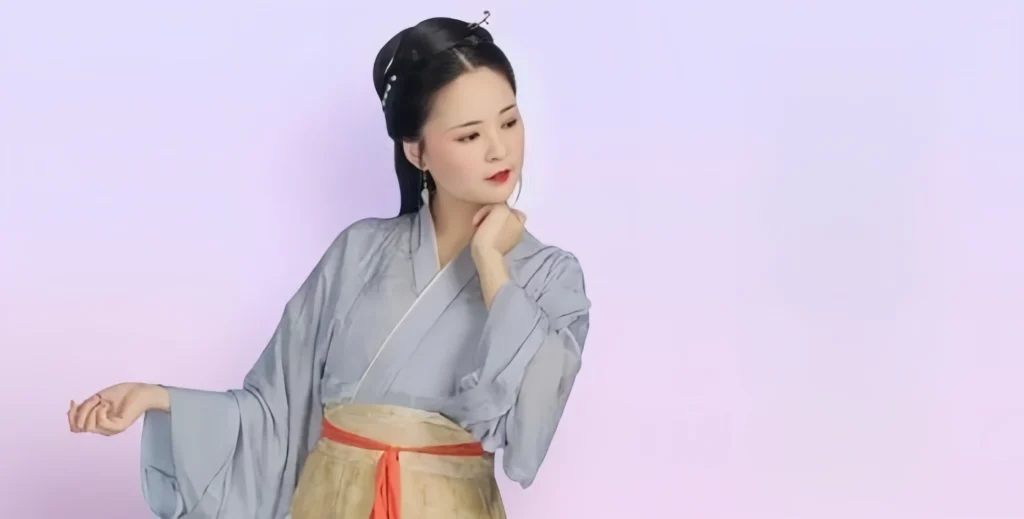
1. Qu Ju (Curved Hem Robe)
Style: One-piece dress
Qu Ju, full name Qu Ju Pao, also called Rao Jin Pao in archaeological reports. It’s a two-part cut, falling under “deep clothing” Hanfu, aka Qu Ju Deep Clothing or Rao Jin Deep Clothing. In today’s Hanfu revival, versions include single-wrapped Qu Ju mimicking artifacts, multi-wrapped ones guessed from figurines, and “short Qu Ju” showing the inner skirt. Its historical roots stretch from the Pre-Qin to Han Dynasty.

2. Ao Qun (Jacket and Skirt)
Style: Top and skirt
Ao Qun refers to a top-and-skirt combo, named after the double-layered Ao top. Paired with pleated or horse-face skirts, it’s a classic look. Records of this style pop up from the Tang Dynasty through the Republic era. The Ming Dynasty was its golden age, so modern talks usually mean Ming-style Ao Qun outfits. Influenced by Ming, early Joseon Korea adopted it, adding their own flair, evolving into the modern Chogori skirt style.
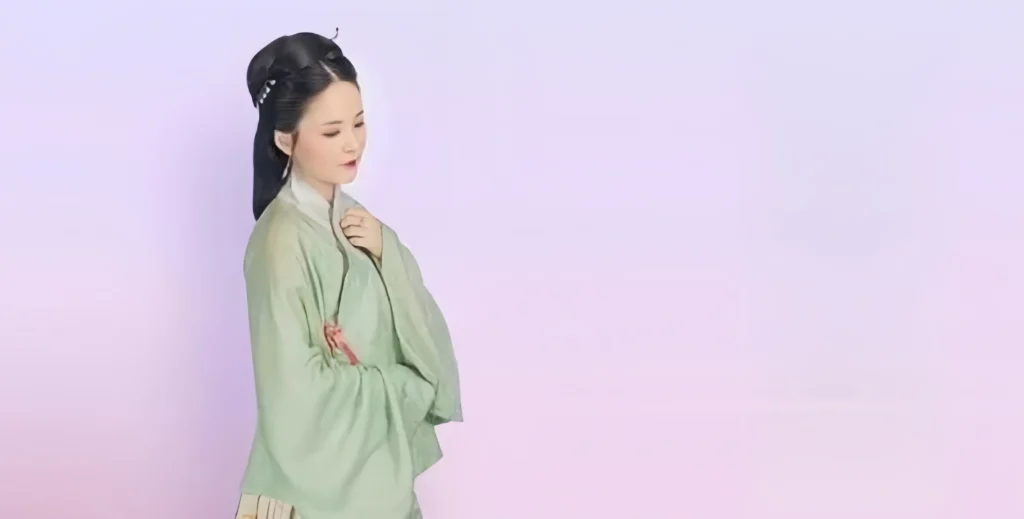
3. Ban Bi Ru Qun (Half-Sleeve Ru Skirt)
Style: Top and skirt
Ban Bi Ru Qun is a short-sleeve top paired with a long skirt. Shen Congwen’s Research on Ancient Chinese Clothing notes: “Ban Bi, or half-sleeve, evolved from Wei-Jin upper Ru into a collarless (or turned-collar), front-open (or pullover) short jacket, elbow-length sleeves, waist-long body.” It started in Sui Dynasty palaces, worn by inner officials and ladies-in-waiting, then spread to the public in Tang.
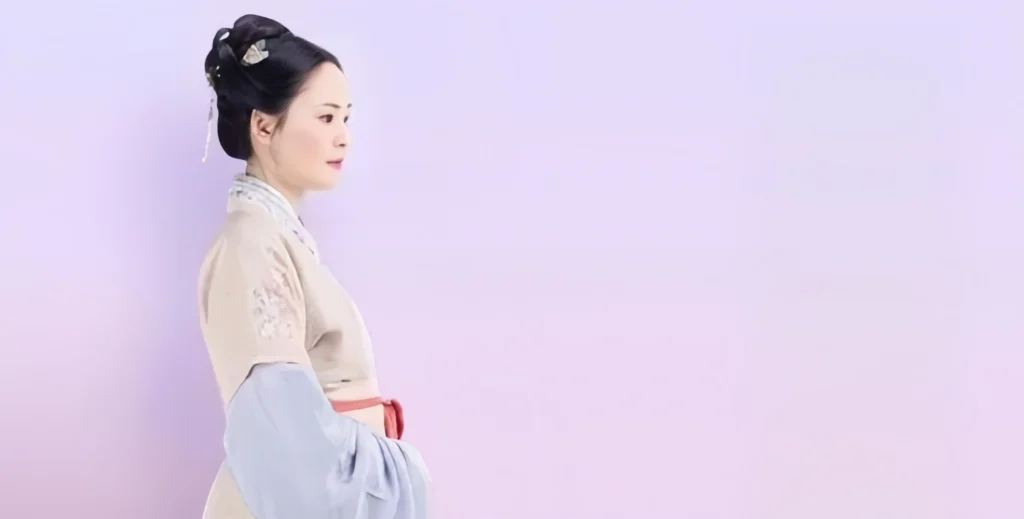
4. Bei Zi (Long Jacket)
Style: Top and skirt
Bei Zi, also called Be Zi or Chuo Zi, was a casual staple for Song Dynasty women and is popular in today’s “Hanfu fever.” Typically a straight-collared, front-open long top with high side slits, paired with a chest wrap or crossed Ru, and a pleated skirt below. By Ming, big-sleeve Bei Zi was often dubbed a cape.
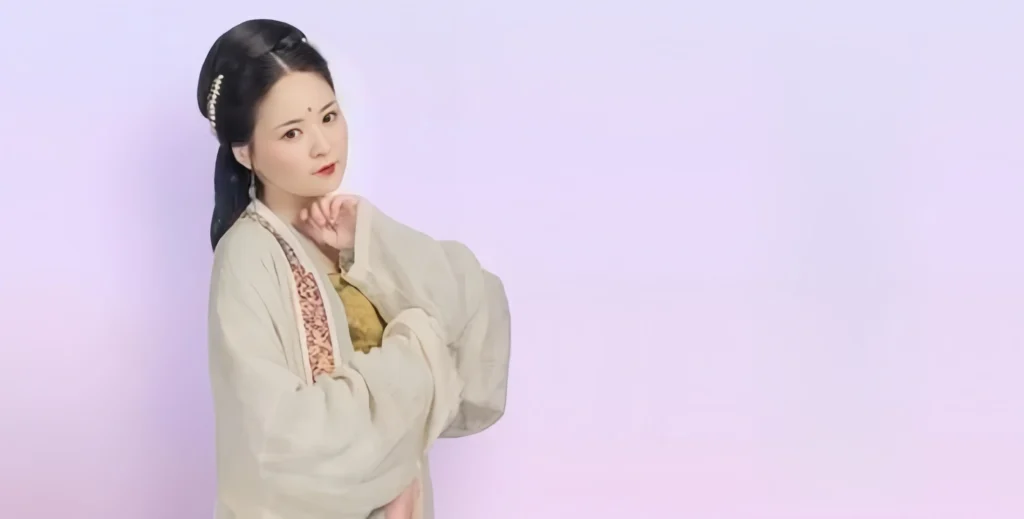
5. Bi Jia (Sleeveless Vest)
Style: One-piece cut
Bi Jia began in the Song Dynasty as a long, sleeveless overcoat, also called a “vest” (different from today’s vest). It spread to the Mongols, per Yuan History: “A garment with a front flap, back twice as long, no collar, tied with two loops, named ‘Bi Jia,’ perfect for horseback.”

6. Dou Peng (Cloak)
Style: One-piece cut
Dou Pao is a sleeveless outer layer in the Hanfu system, said to evolve from raincoats made of palm fibers, called “Dou Bi.” By Ming-Qing, it shifted to silk, not just for rain, known as “big coat” for warmth, with long and short styles—short as Pei, long as Dou Pao. No sleeves, or with sleeve drapes, mostly Ming-style capes.
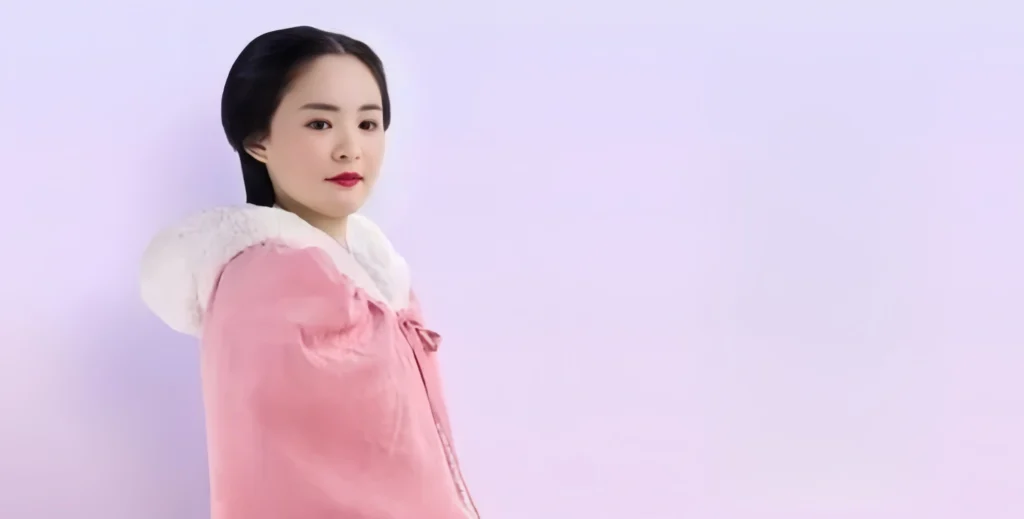
7. Jiao Ling Ru Qun (Cross-Collar Ru Skirt)
Style: Top and skirt
Jiao Ling Ru Qun is a top-and-skirt style with a crossed-collar Ru top and a single pleated skirt. The short top contrasts with the long skirt, with sleeve lengths varying by era and status. Worn by both genders, it’s a Hanfu classic, peaking in the Song Dynasty.

8. Qi Xiong Ru Qun (Chest-High Ru Skirt)
Style: Top and skirt
Qi Xiong Ru Qun, a Ru Qun variant, ties high at the chest. In ancient times, women’s skirts sat lower, but Sui-Tang-Five Dynasties brought high-waist styles, once called high-waist Ru Skirts. Now, it’s dubbed Qi Xiong Ru Qun based on research.
9. Qi Yao Ru Qun (Waist-High Ru Skirt)
Style: Top and skirt
Qi Yao Ru Qun, another Ru Qun type, ties at the waist. The Ru can be crossed or straight (vertical, non-crossing). More common than high-waist versions, it splits into Jiao Ling Qi Yao or Zhi Ling Qi Yao (front-open). Available for women or men.
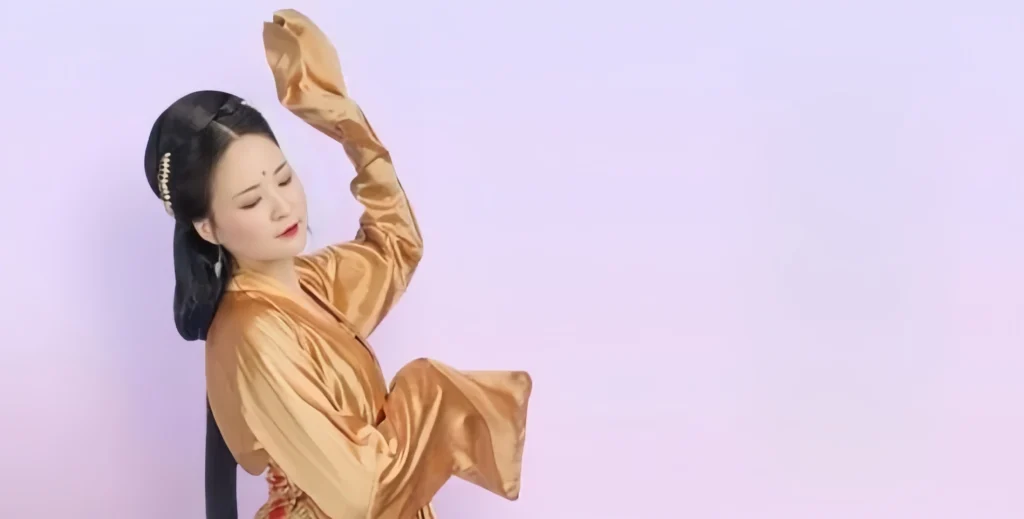
10. Tan Ling Ru Qun (U-Neck Ru Skirt)
Style: Top and skirt
Tan Ling Ru Qun, a Ru Qun subtype, features a U-neck, evolving from Wei-Jin Ru. With Hu culture booming in Tang, short-sleeve, tight, U-neck tops became a trend, showing off curves with wider openings. Paired with pleated or multi-color skirts, it started in Sui palaces for officials and ladies, then hit the streets in Tang as a trendy look.
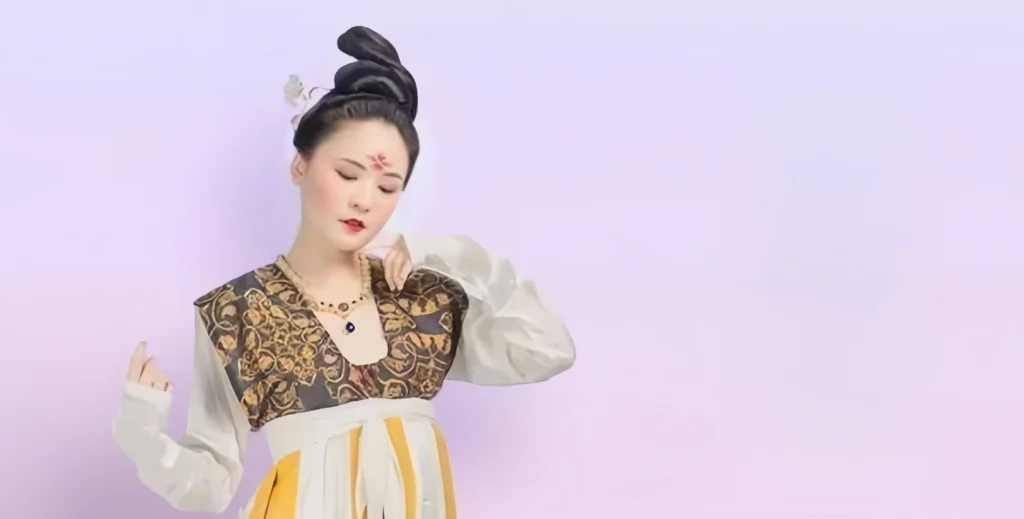
11. Za Ju (Mixed Hem Robe)
Style: One-piece dress
Za Ju, a Qu Ju Deep Clothing spin-off, aka Za Ju Chui Mao, emerged in the Wei-Jin-Northern-Southern Dynasties—a time of cultural fusion. It kept Qin-Han Qu Ju vibes but added foreign flair, with a wide, pointed hem like a swallowtail, layered bands called “Xian,” and side ribbons “Chui,” fluttering elegantly as Za Ju Chui Mao.
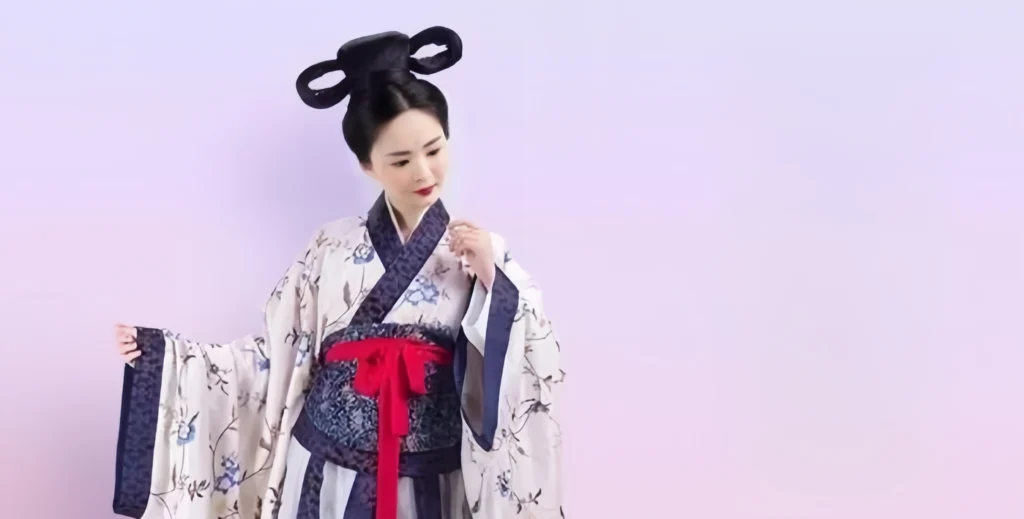
12. Zhi Ju (Straight Hem Robe)
Style: One-piece dress
Zhi Ju, or Chang Jun per Shuo Wen Jie Zi, has straight hems unlike curved Qu Ju. The hem cuts vertically, with side or back panels, secured by a fabric or leather belt, no sewn ties. After Han, as innerwear improved, the older wrapped Qu Ju felt redundant—economy trumped style—so Zhi Ju took over as the deep clothing norm from Eastern Han onward, evolving across dynasties.
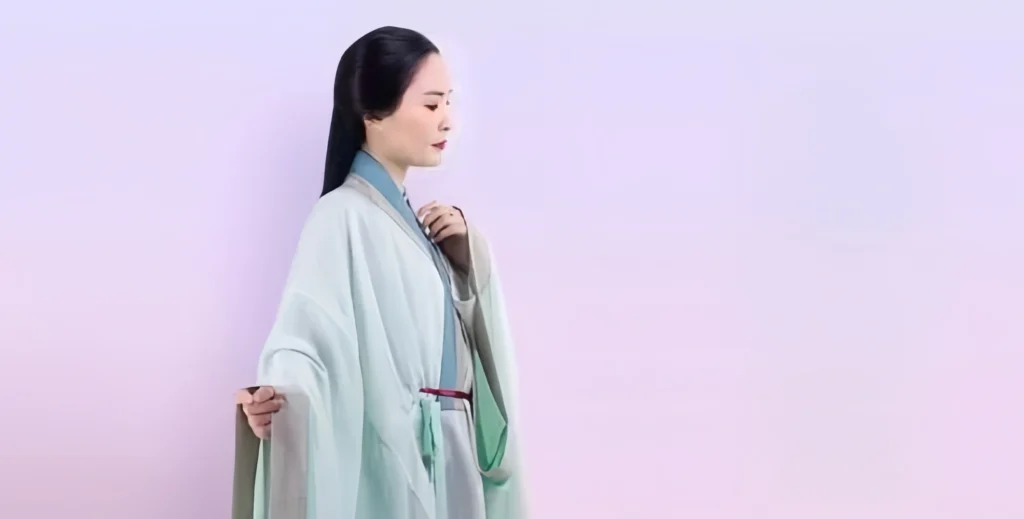
13. Da Chang (Great Cloak)
Style: One-piece cut
Da Chang, aka He Chang or Chang Yi, recorded since Jin, later favored by Daoists. Song scholars loved He Chang, and by Ming, it was a scholar’s outer layer, especially in cold weather for wind protection. It lingered into late Qing as a Daoist ritual and folk garment.
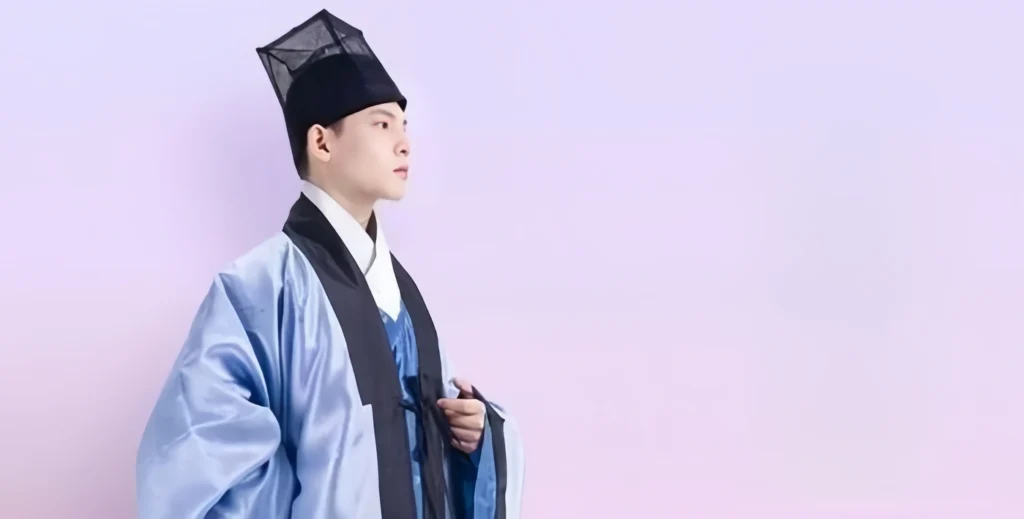
14. Dao Pao (Daoist Robe)
Style: One-piece cut
Dao Pao, a Hanfu men’s style, traces to the ancient “Zhe” (said to be crafted by King Wu of Zhou), evolving in Ming as a Daoist robe. Worn as a home outer layer, under-robe, or commoner wedding attire, it’s also a Daoist ceremonial piece.

15. Lan Shan (Lapped Robe)
Style: One-piece cut
Lan Shan, a Hanfu type, debuted in Tang, boosted by Cheng-Zhu Neo-Confucianism in Song-Ming. A knee-high seam called “Heng Lan” nods to ancient dress traditions. Mostly round-collared, it was a Song public uniform, popular with scholars.
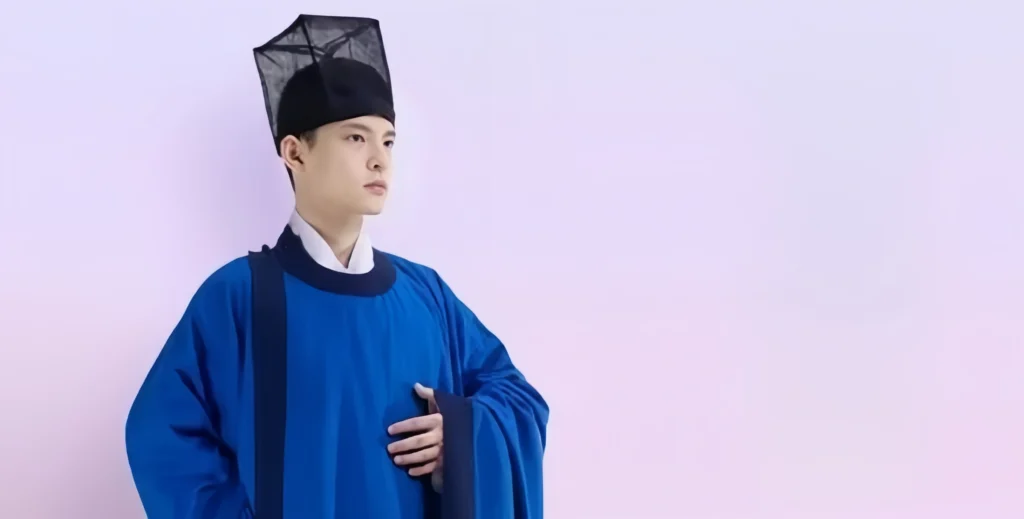
16. Duan He (Short Coarse Jacket)
Style: Top and skirt
Duan He, a laborer’s Han outfit, also called “Shu He,” means coarse hemp or fur-woven tops. It extends to workwear or casuals (top and pants) for the poor or servants, implying low status. By late Qing, it meant “short gear” in novels and plays.
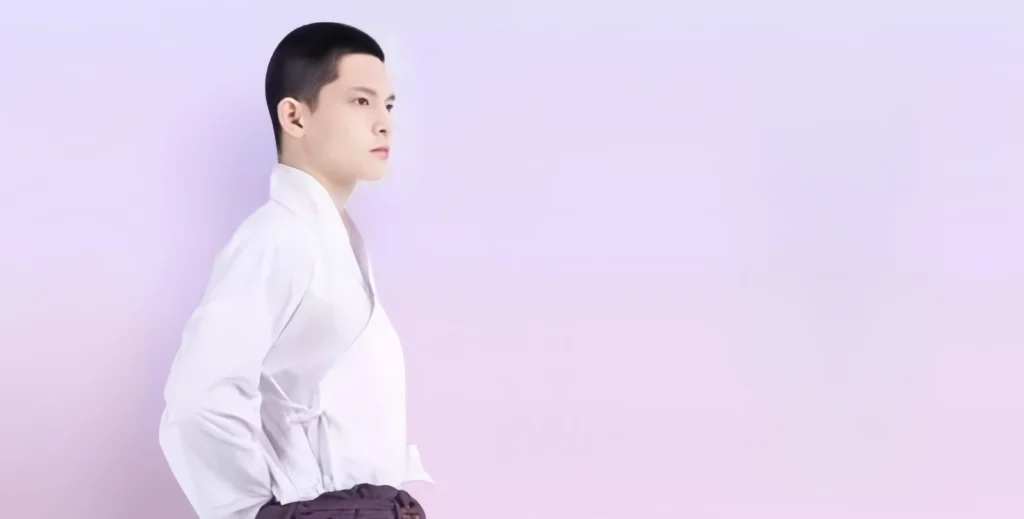
17. Yi Sa (Mongol Robe)
Style: Top and skirt
Yi Sa (from Mongolian “Yise” or “Jisum”), a Yuan garment, evolved into a Mongol robe. Ming adopted it for riding and guard uniforms, per Wang Shizhen’s Gu Bu Gu Ji: “Hu attire, short or sleeveless, split mid-body, with horizontal and vertical folds.” Though Hu-origin, its Ming popularity makes it a Hanfu style today.

18. Yuan Ling Pao(Round Collar Robe)
Style: One-piece cut
Yuan Ling, or Tuan Ling, is a collarless, round-edged style with a stiff inner lining and buttoned neck. Yuan Ling Pao, a narrow-sleeve robe, started as innerwear in Shang, went public in Northern Wei (Xianbei), and peaked as casual or hunting wear in Sui-Tang, per Wang Guowei’s Hu Fu Kao. By Song, it birthed Lan Shan and Bu Fu variants.
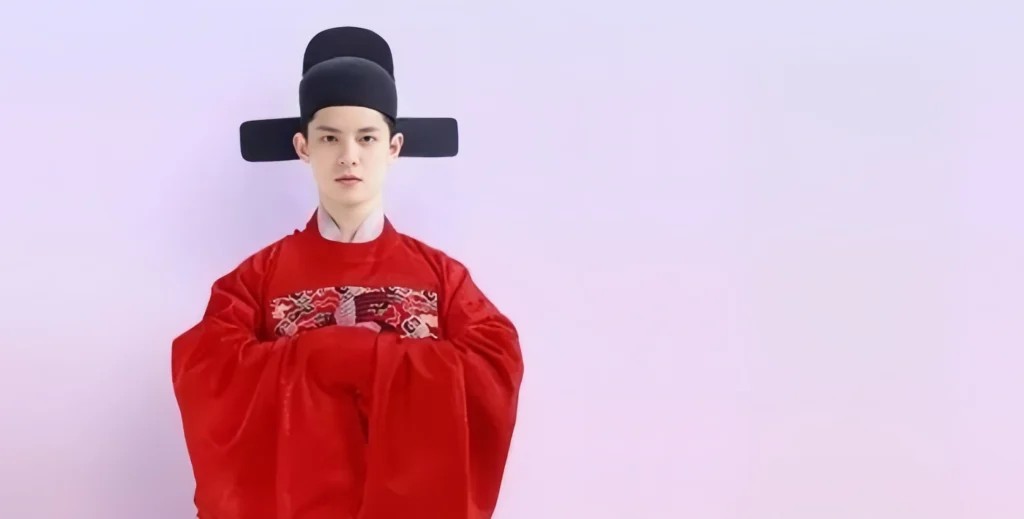
19. Zhi Duo (Straight Cassock)
Style: One-piece cut
Zhi Duo, a Hanfu men’s style, emerged in Song, per Zhao Yanwei’s Yun Lu Man Chao: “Ancient innerwear, now monk Zhi Duo.” Common among Song monks (and some scholars), it shifted in Ming, trending among literati and commoners as casual or home wear.
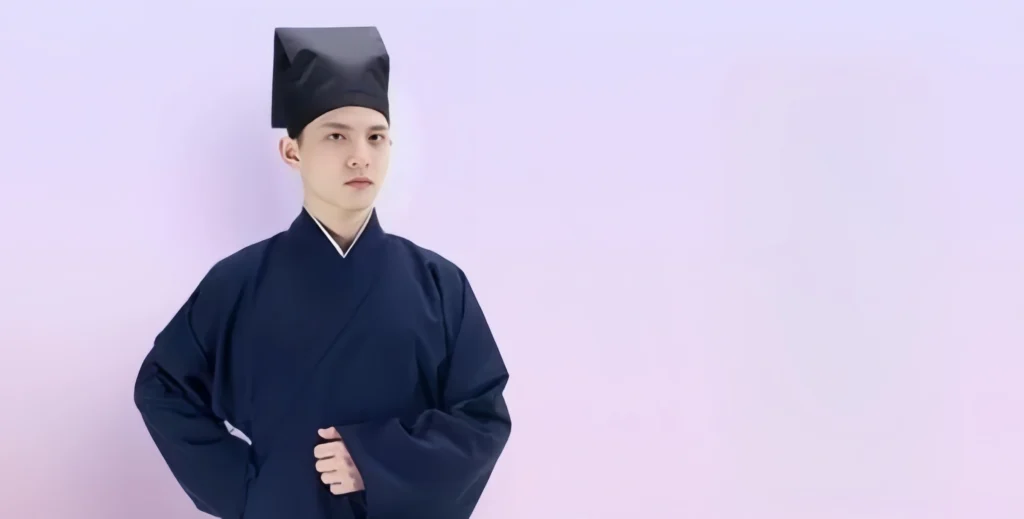
20. Zhi Shen (Straight Long Robe)
Style: One-piece cut
Zhi Shen, a Ming men’s Hanfu style, also called Chang Yi, Zhi Ling, or Hai Qing, held high status—Jinyiwei used it as lucky wear. Seen in emperor dragon robes and official uniforms, it also layered under Yuan Ling or other robes. By late Ming-early Qing, with Manchu influence, it persisted in opera as scholar attire.
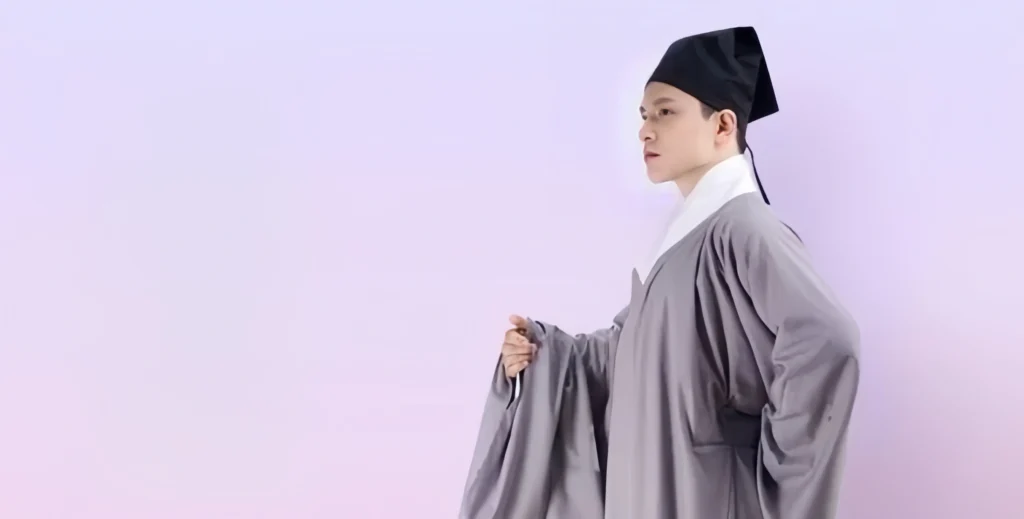
21. Zhu Zi Shen Yi (Zhu Xi Deep Clothing)
Style: One-piece dress
A Hanfu deep clothing type for ritual use, Zhu Zi Shen Yi follows Song scholar Zhu Xi’s Zhu Zi Jia Li, his take on Li Ji’s deep clothing, blending research and tradition.
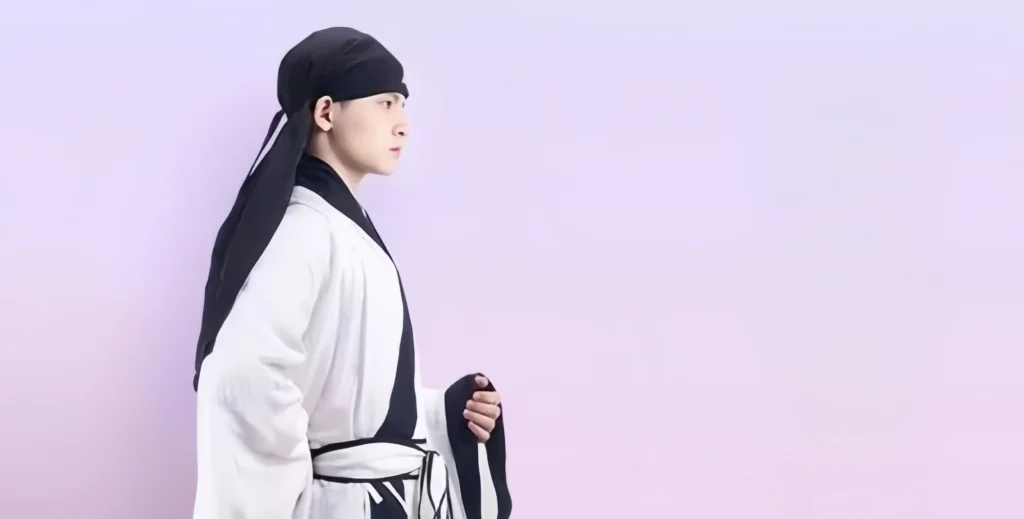

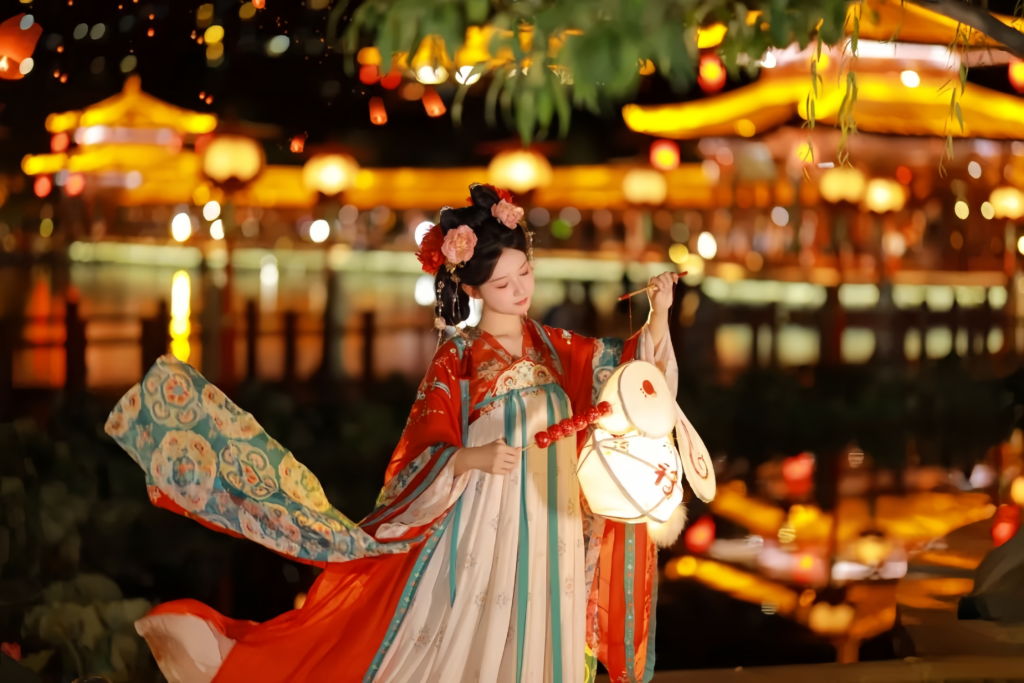


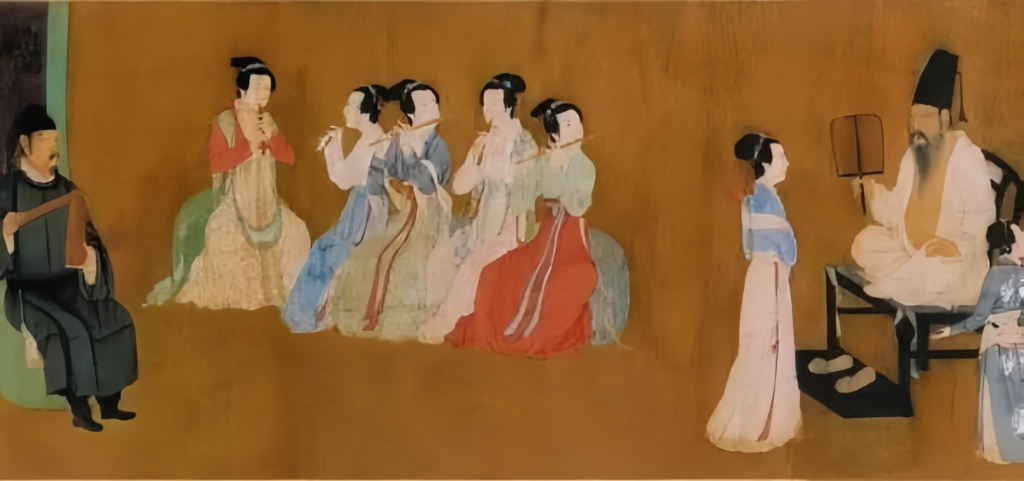
Responses